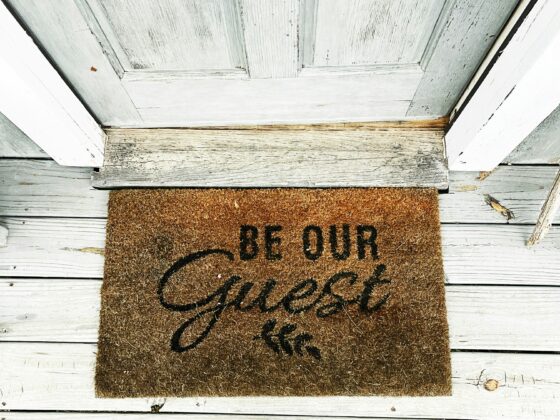
It’s the equivalent of a restaurant saying its strategy is “serve as many plates as possible.” It tells you nothing about who you’re serving, why they should choose you, or how you’ll make them want to return.
Roger Martin, one of the world’s most respected strategy thinkers, is crystal clear: strategy starts with the customer. In our world, that’s the guest. And here’s the truth most hotels avoid — if you don’t build your strategy around a clearly defined guest segment, you’ll end up chasing anyone and everyone. You might fill rooms, but you’ll never fill hearts or build loyalty.
The One Strategy That Works in Hospitality
A hotel only needs one strategy:
Find and target the guests you can deliver the most value to — and make them so satisfied they can’t wait to recommend your hotel to others and return.
That’s it. Everything else is tactics.
Why? Because when you know exactly who you’re for, you can design every touchpoint — from marketing to housekeeping — to serve them better than anyone else. And when you do, you win twice: higher guest satisfaction and higher profitability.
Guests Change — So Should You
Guest needs aren’t static. What delights them today might bore them tomorrow. That’s why strategy can’t be a once-a-year PowerPoint — it must be a living, breathing process that evolves as guests do.
The goal isn’t to meet expectations. It’s to exceed them with positive surprises that make them talk about you, post about you, and book again without hesitation. That requires paying attention, listening, and adapting — continuously.
The Guest Journey: Your Tactical Framework
With the strategy set, the guest journey becomes the perfect way to organize your tactics:
1. Attract – Find the Right Guests
Tactic: Identify where your ideal guests are, understand what they value, and position your hotel to speak directly to them.
- Define your ideal guest profiles using both demographics and psychographics.
- Align marketing channels to where these guests naturally spend time.
- Craft messaging that speaks to their motivations and emotional triggers.
2. Capture – Convert Interest into Bookings
Tactic: Use the proper channels and offers to convert interest from your target audience into direct bookings.
- Optimize your direct booking engine for simplicity and trust.
- Offer exclusive direct booking perks that matter to your target guests.
- Balance pricing between perceived value and profitability — not just market averages.
3. Prepare – Build Anticipation Pre-Arrival
Tactic: Personalize pre-arrival communication and align the experience with the guest’s expectations and desires.
- Send tailored pre-arrival emails with relevant add-ons (e.g., dining, activities).
- Gather guest preferences to customize their experience.
- Coordinate internally so all departments know guest details before arrival.
4. Deliver – Fulfill the Brand Promise
Tactic: Train and empower staff to meet and exceed the needs of the target audience at every touchpoint.
- Ensure consistency between the promise in marketing and the reality in service.
- Build signature moments that create memorable, shareable experiences.
- Give staff the autonomy to respond to guest needs in real time.
5. Review – Learn & Improve
Tactic: Collect feedback and data to refine targeting, processes, and offerings for the target audience.
- Actively request reviews and make it easy to give feedback.
- Monitor guest feedback across all channels and respond personally.
- Use insights to improve targeting, processes, products, and services.
The Choice for Hotels
You can keep chasing anyone with a credit card, fighting price wars, and living month-to-month on occupancy reports.
Or you can choose a single, focused strategy: know your guests, serve them better than anyone else, and make them happy through every stage of their journey.
One path fills rooms.
The other builds a brand.
Which future are you creating?






